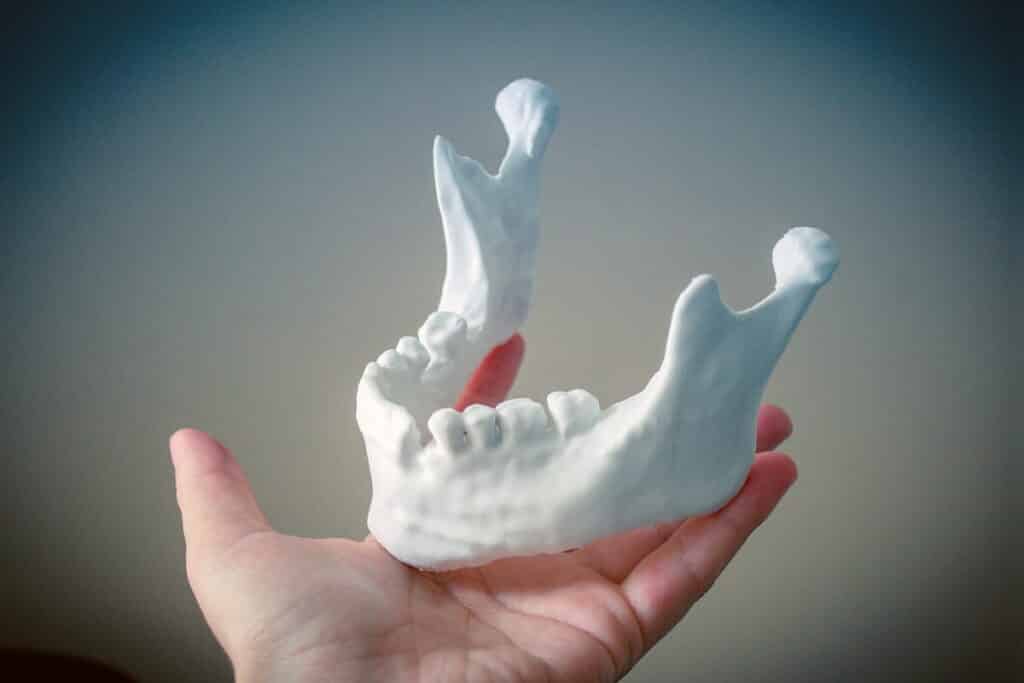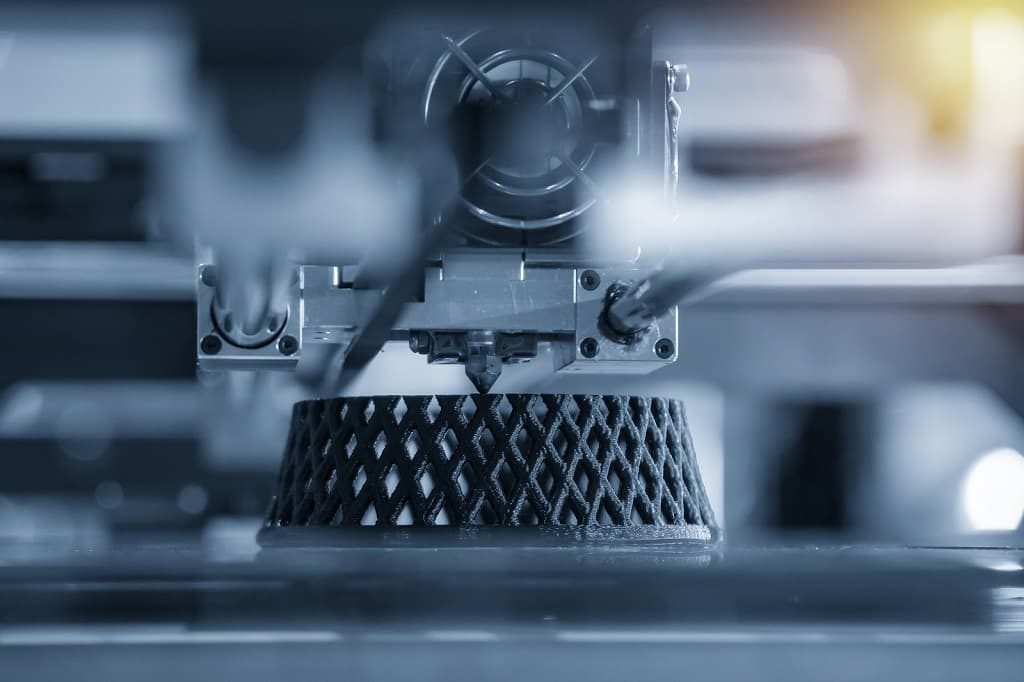3D Printing Software – Who Are the Main Players?
Table of contents

We’ve already written up the top five 3D printing startups of 2016 and the top five 3D modeling companies. To get from a 3D model to a 3D printer, however, usually requires a printer management tool that can prep a file for 3D printing. These tools may simply send a file to the printer and, so, may be included with the system upon purchase, but there are more interesting programs that actually optimize files so that they may be lighter and stronger than they would be otherwise. There are few companies really attempting to tackle this niche space and only two that are publicly traded. Listed below is a look at the main 3D printing management players that exist in the space.
Autodesk (NASDAQ:ADSK) – Market Cap $16.66 Billion
While Autodesk is most known for its 3D modeling software, such as AutoCAD and Fusion 360, the company looked to tackle the 3D printing industry in 2014, when it released its open-source Ember 3D printer. The acquisition of Netfabb in 2015 gave Autodesk a tool that was highly valued by the 3D printing industry.
Netfabb is a popular software for preparing files for 3D printing. While the free version of the program allows for auto-repair of damaged files or models with holes, the pro version makes it possible to optimize structures for 3D printing. By converting solid 3D models into more complex geometries, such as lattice-filled shapes, it’s possible to maintain or even enhance structural integrity, while reducing weight. In turn, one can take full advantage of 3D printing’s ability to produce objects impossible with traditional manufacturing techniques.
Autodesk has since applied the expertise of the Netfabb team to new, experimental design programs, such as Autodesk Within and Project Dreamcatcher. Within performs similar topology optimization techniques previously described in relation to Netfabb and Dreamcatcher takes this idea a step further. Rather than simply generate one new geometrically complex version of a solid shape, Dreamcatcher generates dozens, created through advanced algorithms to give designers the option to choose the shape that fits an application best.
For low-end 3D printers, Autodesk has also released a free software called Meshmixer, a simple tool for editing and transforming 3D models before sending them to a 3D printer.
Materialise (NASDAQ:MTLS) – Market Cap $346 Million
Belgian firm Materialise is an exciting company in that it works closely with almost every other player in the industrial 3D printing market, including HP. The company has been developing 3D printing software for 25 years now, while also providing 3D printing services, thus informing its software development.
The company not only provides its Build Processor (essentially print drivers) to a wide range of 3D printer manufacturers, but it has also developed a sweeping 3D printing software suite that covers everything from managing a network of 3D printers, creating quotations for print orders, and robotics automation to preparing medical data for 3D printing applications.
This latter example, in particular, is interesting because it makes Materialise a leader in the field of medical 3D printing. With the company’s Mimics software suite, it’s possible to convert a patient’s CT scan into a 3D model with which one could create a patient-specific surgical guide, medical model or even transplant.
3DSIM – Private Startup
One of the biggest problems with industrial 3D printing, specifically metal 3D printing, thus far is the ability to accurately predict the printing process. Because metal support structures must be CNC machined in order to be removed, machine operators literally attempt to print metal objects six or seven times before finding the optimal orientation of a part before printing. And, due to the residual stress that a part experiences during the metal printing process, machine parameters related to laser power may need to be accounted for before printing even occurs.
As you might imagine, this is an expensive problem. For this reason, there is currently a lot of investment being put into bringing predictability and repeatability to metal 3D printing. While companies like Stratonics are working on the hardware for monitoring and controlling the 3D printing process, 3DSIM, based in Park City, Utah, is developing a print preview software that relies on advanced algorithms to perform physics simulations about the printing process. This allows machine operators to anticipate how the laser power may affect a print, depending on the material, or the proper part orientation and support structure placement to obtain a functional part.
Because of the value of this technology for industrial 3D printing, it would not be surprising to see large manufacturing corporations, such as GE, take an interest in 3DSIM.
3DPrinterOS and Other Cloud-Based Software
There are a number of 3D printing software developers, many of which are startups, that base their solutions in the cloud. Perhaps leading the charge is 3DPrinterOS, which recently competed in TechCrunch Disrupt. The startup’s new Zap platform is meant to manage 3D printer networks from the cloud, while also connecting to 3D printing apps, such as the aforementioned Netfabb. When printers are outfitted with webcams, it’s also possible to monitor prints remotely.
Also worth mentioning is Authentise, a futurist-run startup that works with third parties to develop a number of apps for 3D printer management. While 3DPrinterOS is free, Authentise charges a lofty fee as it provides engineering and consultation services, as well.
Others included in this category are the open-source OctoPrint, which has a large following of desktop and open-source 3D printer users; PrintToPeer; Astroprint, which is heavily forked from OctoPrint; and MatterControl, a software developed by 3D printing retailer MatterHackers.
Stratasys (NASDAQ:SSYS) is a unique company on this list because it only recently got into the 3D printing software game and its software only works with Stratasys machines. That said, the company is making a big deal out of its new GrabCAD print software, a cloud-based solution for managing files and printers over the web. The tool allows users to upload native CAD files, rather than simpler STL files, to the web before preparing them for printing and sending them to a networked 3D printer. In time, it’s possible that this software could be expanded to other 3D printer manufacturers.
Cura and Other Desktop Print Management Software
Speaking of open source, the desktop and open source 3D printing community has developed a plethora of management software solutions that have their own advantages and disadvantages. One of the most popular open-source programs is Cura, developed by desktop 3D printer manufacturer Ultimaker. This program more or less preps a model for desktop 3D printing, including the ability to incorporate support structures and set parameters for specific materials.
Simplify3D is a paid alternative, which many in the desktop community love for its great control over the printing process and ability or address problems before printing. Simplify3D repairs models and previews the printing process to help the user anticipate problems. Support structures can be placed strategically and a dual extrusion wizard makes it possible to create special supports for dissolvable materials.
Conclusion
As mentioned in our previous article on 3D modeling companies, Autodesk has received steady growth over the past five years. Because it aims to tackle the entire gamut of 3D modeling, including 3D printing, Autodesk is an important company in 3D printing and manufacturing overall. However, because Materialise has found an important niche with increasing growth, medicine, and 3D printing software, they are worth keeping an eye on.
3DSIM may be taken into the fold of a larger company, but is still in the development stages. As a startup, 3DPrinterOS has an eye on the future of cloud manufacturing and Industry 4.0. If it can expand from desktop 3D printing to include even more industrial systems, they may just do it. Ultimaker continues to be an important startup, which recently expanded to North America and released a professional-level 3D printer that runs on Cura.
Sign up to our newsletter to get more of our great research delivered straight to your inbox!
Nanalyze Weekly includes useful insights written by our team of underpaid MBAs, research on new disruptive technology stocks flying under the radar, and summaries of our recent research. Always 100% free.





















Cool post Nanalyze!! Yes, there is a lot of interesting activity in the 3D design and 3D printing space. It’s exciting is that small players are also having a global impact, like our app Morphi which is used in over 100 countries by people of all ages, educational backgrounds and skill levels. http://www.morphiapp.com Check out projects being made in the app at https://www.instagram.com/morphiapp/?hl=en.
Thank you for the info Morphi. We’ll check out your app.